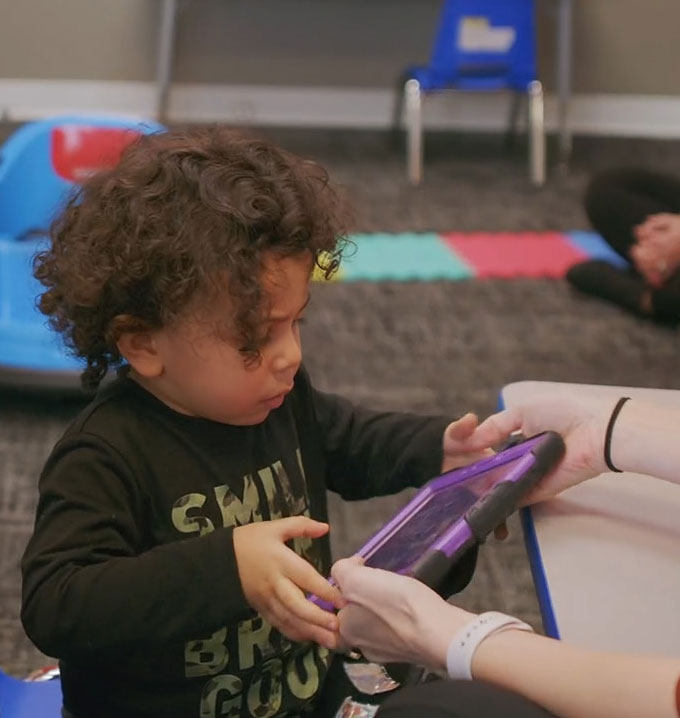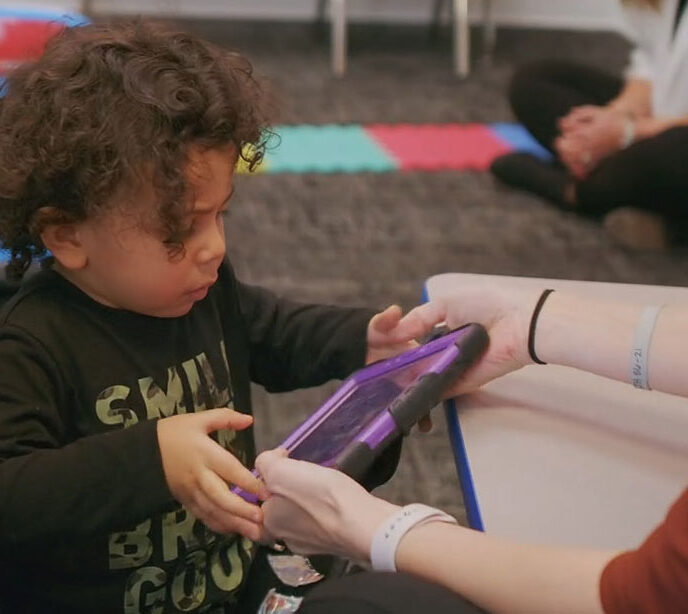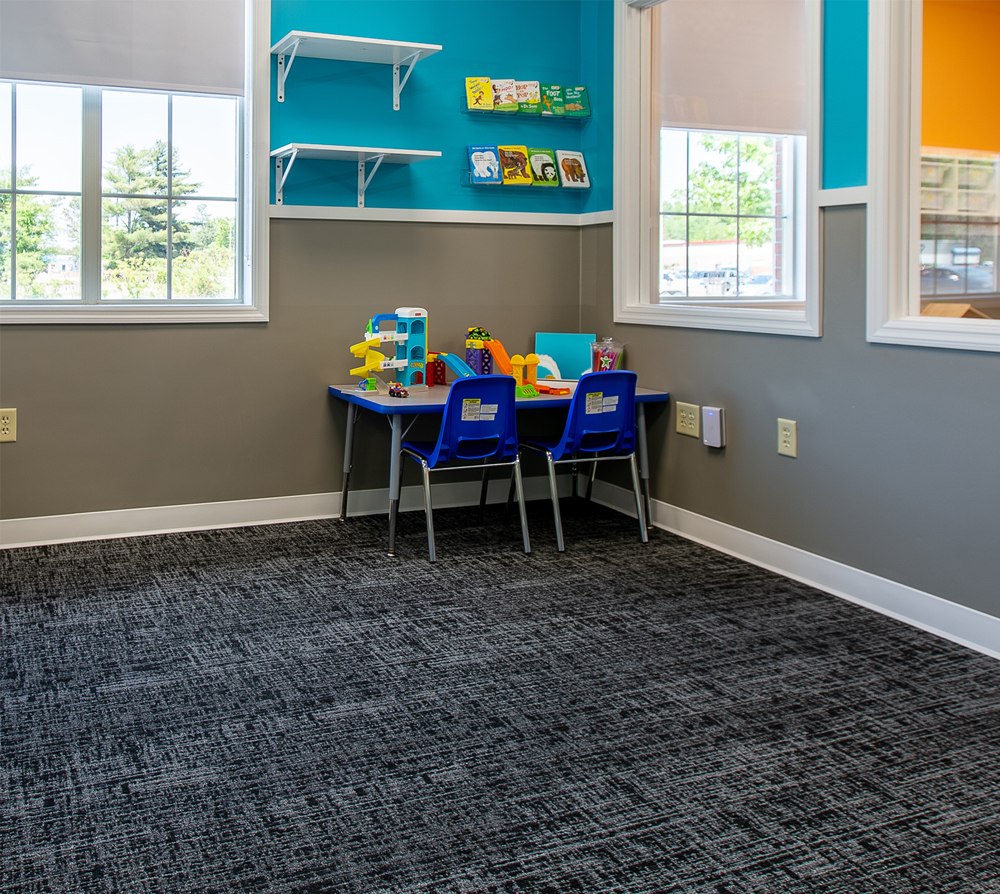PECS and Its Use in ABA Therapy – Lighthouse Autism Center
The picture exchange communication system, or PECS, is a teaching system that can help an autistic child or another individual with speech difficulties improve their communication skills. We take a look at PECS’ role in ABA therapy and unpack how it works.

What Is the PECS System and How Is It Used In ABA Therapy?
The Picture Exchange Communication System (PECS) is a teaching system that can help autistic children and other individuals with speech difficulties improve their communication skills. At Lighthouse Autism Center, PECS is one of the tools we use in Applied Behavior Analysis (ABA) therapy to support independence, confidence, and stronger outcomes. Let’s take a closer look at what PECS is, how it works, and the benefits it can provide for children in therapy.
Picture Exchange Communication System and Its Role in ABA Therapy
Many autistic children have difficulties communicating verbally. PECS provides a structured, evidence-based way to help them express their needs and their wants while reducing frustration and building social connections. In our ABA therapy programs, PECS is used alongside other strategies to promote progress in communication, social development, and daily living skills.
What Is PECS in ABA?
The Picture Exchange Communication System, or PECS, is a communication system that was developed in the USA in 1985 by Andy Bondy, Ph.D., and Lori Frost, M.S., CCC-SLP, the founders of Pyramid Educational Consultants, Inc.
This system was introduced to support autistic preschoolers in the Delaware Autism Program. Today, PECS is widely used across the world as a form of picture communication for autism, supporting children and adults with speech or language delays.
PECS is an augmentative and alternative communication (AAC) system that draws on the principles of Applied Behavior Analysis and the work of psychologist B. F. Skinner and his research from the book “Verbal Behavior”, which also forms part of the foundation of verbal behavior therapy used in many ABA programs today. Unlike other methods, such as sign language or pointing systems, PECS was designed to encourage children to initiate communication, not just respond.
How PECS Works
One of the downsides to other programs and methods designed to help those with communication issues, such as sign language and picture point systems, is that they rely on the teacher to initiate communication with a student. This creates a situation where the student learns to only respond in communication and to never initiate it themselves. The main goal of PECS is to help address this by teaching students to communicate more spontaneously using specific prompting and reinforcement strategies and avoiding verbal prompts, as well as improving their functional communication skills.
Implementing PECS
Whether you are using PECS for autism or other causes of communication-related challenges, it has a specific process that you need to follow.
Complete Reinforcer Sampling
Before the PECS protocol is implemented, it’s important to first complete “reinforcer sampling.” Reinforcer sampling simply refers to the creation of an inventory of activities, toys, or other items that the student likes so that these items can be used as motivators during PECS.
This inventory is created using an assessment process that can be completed in numerous ways, such as asking caregivers or observing the student, seeing what they choose most and least often, and presenting the learner with pairs of options to see what they like the most. The reinforcers that are chosen will need to be consistently appealing to the learner in order to assist with PECS.
The Six Phases of PECS
These are the six phases of PECS:
Phase 1: How To Communicate
In phase one, the student learns to initiate communication by exchanging pictures for things they really want or activities they want to take part in with a second trainer, who is the student’s communicative partner. (These desirable items and activities were identified during the complete reinforcer sampling stage.)
Phase 2: Distance and Persistence
During phase two, the student learns to use this skill of exchanging a picture to get something they want in different places. They learn to do this by seeking out their communicative partner. They are also taught to initiate communication with other communicative partners using the same system. This is accomplished using different desirable items and activities.
Phase 3: Picture Discrimination
During phase three, the student is now tasked with asking for two or more of their favorite things, using multiple pictures. These images are stored in a PECS Communication Book, which allows for easy removal and return of images used by the student.
Phase 4: Sentence Structure
In phase four, the student learns to complete basic sentences using what are known as Sentence Strips. These strips begin with an “I want” picture, with the student adding the picture of the item they desire to the strip from the PECS Communication Book. Once the student has demonstrated the ability to make this request, additional detail is added to these statements using descriptors, including the number, color, shape, or size of the object that they want.
Phase 5: Responsive Requesting
Phase five asks the student to engage with the question “What do you want?” and to respond using the skills and tools they learned in phase four. When asked this question, the student must use the Sentence Strips and pictures from their PECS Communication Book to provide an answer.
Phase 6: Commenting
In the final phase of PECS, the student learns to answer other questions such as “What do you see?”, “What do you hear?” and “What do you smell?”. This is done by teaching them to use additional phrases such as “I see,” “I hear,” and “I smell” on their sentence strips, expanding their requests beyond “I want.”
The Benefits of the PECS System for Autism
There are many benefits to teaching using PECS. Here are some of the advantages that come with using PECS with autism therapy:
- Supporting clearer, more functional communication
- Encouraging independent initiation of communication
- Reducing frustration and negative behaviors
- Building early social skills and relationships
- Easy to learn for a student’s partner
- Helping communication partners (teachers, caregivers, peers) understand the child more easily
- Supporting speech development in some learners
Find Out More About Lighthouse Autism Centers and How We Use PECS
At Lighthouse Autism Center, we provide PECS for autism treatment and to help our students achieve better outcomes. We also provide autism resources so that you can better navigate this spectrum disorder and gain more insight into our Lighthouse Fusion® ABA therapy program and how it can help your child. Contact us to find out more about how we can help.
Together, we can unlock your child’s potential
Related News

10/07/2025
PECS and Its Use in ABA Therapy – Lighthouse Autism Center
The picture exchange communication system, or PECS, is a teaching system that can help an autistic child or another individual with speech difficulties improve their communication skills. We take a look at PECS’ role in ABA therapy and unpack how it works. What Is the PECS System and How Is It Used In ABA Therapy? […]

08/13/2025
ABA Therapy Tips for Taking Your Autistic Child to the Dentist
Taking Your Autistic Child to the Dentist For any child, and even adults, a trip to the dentist can often be filled with anxiety, fear, and discomfort. For a autistic child, especially, these feelings can be even further heightened by sensitivities to noise, smell, and touch. To make this experience better for both the child […]

08/13/2025
Tips for House Hunting with Your Child on the Spectrum
Guidance for Families with Children with Autism when Moving Moving is always a stressful and complicated endeavor. But when you have a child on the autism spectrum, the thought of packing up your household and moving somewhere new can seem like a near-impossible task. Parents often worry that their children will get overwhelmed by this […]


